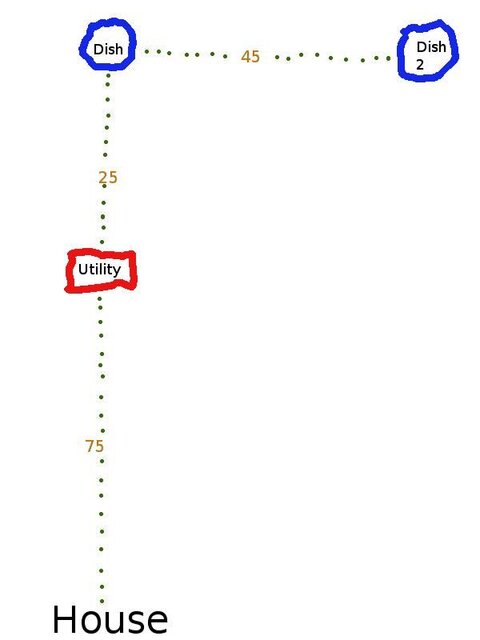Will I have any problem with this set-up? :
I plan to dig ONE shallow trench out to the first dish and the future dish site.That one trench will contain: Ribbon cables for both dishes, One common ground wire for both dishes, One waterline, And one 120V AC line.
The AC line will not be plugged in except while working at the dishes and possibly some weed-eating.(I usually use the gas weed eater ) The water line will be shut-off during cold weather...no freezing problem.
My main concern is any interference caused by the various lines so close together? And any problem with using a common ground for both dishes? Or something else that I didn't think of?
BTW,the ribbon cables will be inside separate black plastic pipes.AC line will either be burial grade or in a separate plastic pie as well,depending on cost.
I don't HAVE to run AC and water,but it would be handy to have both in that area.Due to septic lines, I can't space the lines further apart..even if I wanted to dig more trenches.
Thanks in advance for any ideas!
I plan to dig ONE shallow trench out to the first dish and the future dish site.That one trench will contain: Ribbon cables for both dishes, One common ground wire for both dishes, One waterline, And one 120V AC line.
The AC line will not be plugged in except while working at the dishes and possibly some weed-eating.(I usually use the gas weed eater ) The water line will be shut-off during cold weather...no freezing problem.
My main concern is any interference caused by the various lines so close together? And any problem with using a common ground for both dishes? Or something else that I didn't think of?
BTW,the ribbon cables will be inside separate black plastic pipes.AC line will either be burial grade or in a separate plastic pie as well,depending on cost.
I don't HAVE to run AC and water,but it would be handy to have both in that area.Due to septic lines, I can't space the lines further apart..even if I wanted to dig more trenches.

Thanks in advance for any ideas!




